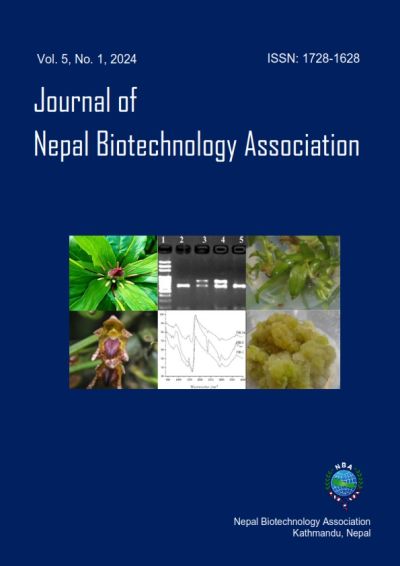Chemical and Morphological Characterization of Crinis Carbonisatus
DOI:
https://doi.org/10.3126/jnba.v5i1.63742Keywords:
Crinis Carbonisatus, FTIR, Human hair, Pyrolysis, SEM, XRDAbstract
Crinis Carbonisatus, prepared by pyrolysis of human hair, is known as a traditional Chinese medicine used for increasing blood clotting and wound healing. Its uses have been explored in literature but no detailed structural study is yet reported. This work is aimed at studying the chemical and morphological variation of Crinis Carbonisatus under given heating conditions. Crinis Carbonisatus was obtained after pyrolyzed of human hair at 300 °C in a sealed ceramic pot. The obtained samples were characterized in terms of their physicochemical properties by scanning electron microscopy (SEM), Fourier Transform Infrared (FTIR) spectroscopy and X-ray Diffraction (XRD). Distinct morphology with nanoparticulate structure was observed on the SEM micrograph. FTIR spectroscopy of the samples revealed the presence of functional groups like –OH, -COO-, and -NH as well as methyl (-CH3) and methylene (-CH2-) groups. The nanoparticulate graphitic form was confirmed by XRD. It has been found that with the increase in pyrolysis time; the amorphous nature of the Crinis Carbonisatus materials increases while their particle size decreases.




